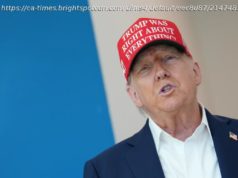 Tamara Keith
Tamara Keith
President Trump signed an executive order related to the oil pipeline industry in the Oval Office on January 24.
Pool/Getty Images
hide caption
President Trump signed an executive order related to the oil pipeline industry in the Oval Office on January 24.
President Trump signed a record number of executive orders and presidential memoranda his first week in office — a total of 14 compared to President Obama’s 13. But something is noticeably absent from those directives — ethics for the executive branch.
Presidents Clinton, George W. Bush and Obama all took executive action their first week in office to send a signal to the American public about their commitment to ethics. President Bush signed a presidential memorandum about the standards of ethical conduct, including no conflicts of interest, no solicitations of gifts and a reminder of laws that say senior government employees can’t immediately lobby the agencies they worked for.
President Clinton’s first executive order , signed Jan. 20, 1993, said senior executive branch employees couldn’t lobby their former agencies for five years. It also said that they couldn’t engage in activity on behalf of a foreign government or political party — ever.
Sound familiar? It’s very similar to Donald Trump’s calls on the campaign trail to « drain the swamp. » His proposal was almost exactly the same as President Clinton’s order — a lifetime ban on executive officials lobbying on behalf of a foreign government and a five-year ban on those officials becoming lobbyists upon leaving the administration.
But now a week into his presidency, Trump still hasn’t made his swamp-draining policies official. Although his transition team did announce that people serving in the administration would have to sign a strict ethics pledge, it’s not clear whether that has happened. When asked whether President Trump had plans to sign an executive order on executive branch ethics, an administration spokeswoman said she had nothing to announce at this time.
Instead, Trump’s directives focus on showing that he’s keeping his other campaign pledges. He signed a memorandum withdrawing the United States from the Trans-Pacific Partnership, as well as directives to undermine the Affordable Care Act, temporarily halt refugee resettlement in the United States, revive the Keystone XL Pipeline, and build a wall on the U. S.-Mexico border.
According to Phillip Cooper, a professor of public administration at Portland State University and author of By Order of the President: The Use and Abuse of Executive Direct Action , the language in Trump’s directives has been more bold than is typical.
« If you look at that language, right after the first paragraph or so, when it gets into the policy stuff, you can see that a lot of it is right out of the campaign, » he says.
Cooper also says that executive actions are to be expected in the early days of an administration.
« In terms of scope and content, the first few things he’s done are pretty dramatic. In some of the previous administrations, we’ve seen a lot of symbolic things happen right away, responses to campaign promises, but in this case, clearly, he’s going after some of the most controversial issues. »
But just because a president signs an order on something he pledged during the campaign, doesn’t mean it will become a reality. President Obama, for example, never was able to close the prison at Guantanamo Bay, despite signing an order to do so his first week. And as for those ethics directives, presidents can grant and have granted waivers.






